Working with “Director Suzuki and his fun friends” – “Mononoke the Movie: Chapter 2: Fire Rat” Interview with Kenji Nakamura and Kiyotaka Suzuki (Part 1)
The sequel to “Mononoke the Movie: Karakasa”, “Mononoke the Movie: Chapter 2: Fire Rat” will be released on March 14th. The middle part of the trilogy, this film is directed by Nakamura Kenji as general director and Suzuki Kiyotaka as director, and is produced by Kuruseru, a new studio that is a group company of the production company Twin Engine. Suzuki, who has been involved in many of Nakamura’s works, has been working on the film as a team, leading Kuruseru’s animation and direction unit, since he joined “Karakasa” as a director’s support. We spoke to Nakamura and Suzuki, who are on good terms with each other, about the production of Chapter 2. (Interview and composition: Gosho Kotaro/Anime Hack editorial department)
■From “support” to “director”
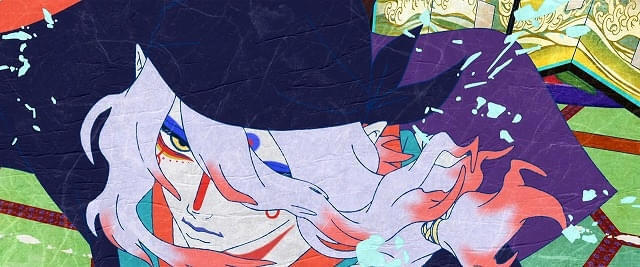
(C)Twin Engine
–After the release of “Mononoke the Movie: Karakasa,” it was announced that “Mononoke the Movie” would be made into a trilogy. Please tell us how it came to be made into a trilogy.
Nakamura: Actually, this “Mononoke” project originally started out as a series for streaming, not as a movie. But when the setting became the Ooku, and many Mononoke appeared, and we decided to depict the Ooku from various angles based on the same theme, some people said that it would be better to watch it all at once. So, as we put the whole thing together into three parts, we decided to make it into a movie, and as we were making it, the gears shifted more and more.
To be even more frank, it wasn’t that I said I wanted to do it myself, but rather that I was told that the project itself was changing more and more, and every time we had a meeting, I was surprised and said, “Oh, really!?” (laughs), and the truth is that we changed and revised the plan each time. It seems that the three-part film series was the result of a decision made by various people in planning and sales that this would be the best way to release “Mononoke” to the world at that time. However, once it was decided to make it into a film, I completely shifted my thinking to the point where I wanted to create a “Mononoke for the movies” that could withstand theaters. When the project was planned for streaming, I was thinking about people watching on their smartphones, tablets, or on the big screen at home, but for the time being I forgot about people watching on their smartphones and focused on tuning it to be viewed in the best possible environment, the theater. That’s how it went.
–While the story continues from the first chapter, “Karakasa,” the structure is such that the second chapter, “Fire Rat,” can be enjoyed on its own, right?
Nakamura: That was an absolute requirement. Making each film enjoyable on its own while changing the direction for each of the three films has been the same since the “Mononoke” TV series. On the other hand, I think it’s fine that each chapter has its own personality, to the extent that there are people who like chapter 2 but not chapter 1 so much. I just want people to like the characters in the story. That was the image I had in mind when I made it.
–Director Suzuki was credited as a “director supporter” in chapter 1, “Karakasa.” How were you involved?
Suzuki: A unit from the company I belong to helped with chapter 1. It was the first time the directors in that unit were directing, so I backed them up and helped out by drawing a little storyboard, and then I was even credited in the opening credits. Personally, I was just hoping that it would be enough if it was featured briefly in the ending credits.
–What parts specifically were the unit responsible for?
Suzuki: It was done in scattered scenes so it’s hard to say specifically, but in terms of the overall parts, the part they were responsible for was the part where the medicine seller says, “I could see a shape.”
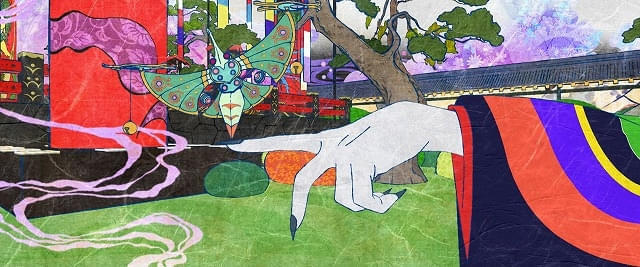
(C)Twin Engine
–How are the general director and director for Chapter 2 allocated?
Nakamura: At the series composition stage, it had not yet been decided that Director Suzuki would be the director. After that, as we were making Chapter 1, the schedule overlapped with Chapter 2, and I was so busy with Chapter 1 that I was dizzy, and I realized that it would be difficult to make everything with one line team. At that stage, we decided that it would be better to have a different director for Chapter 2, and as Director Suzuki just said, he was very supportive of Chapter 1, so we asked him to go from being a supporter to being the director for Chapter 2. Director Suzuki and I have worked together on various projects and have a long relationship, so one of the reasons I asked him to be the director is that he knows me well. He knows both the good and bad points, and he is very good at making plans. In Chapter 2, I asked Director Suzuki to “Decide what I should do,” and I remember him responding, “If Nakamura supports the storyboard, we’ll do the rest.” I think Director Suzuki will tell us whether it went well or not (laughs).
Suzuki: (laughs). No, I think it went well. It’s different from the general division of roles between general director and director, but I was entrusted with the second chapter as the director. Within that, I borrowed the power of general director Nakamura only where I needed it, and I controlled and assembled the second chapter on the spot itself.
Nakamura: I was in charge of supervising the designs that appear across all three chapters, and I also had a lot of work related to “Mononoke” other than the visuals, so it was very helpful. As for the second chapter, I was in a position where I had to prepare the overall design while communicating with the designers so that Director Suzuki could create the work, and during production, I handed it over like a bowl of noodles (laughs).
Suzuki: It was definitely a bowl of noodles (laughs).
Nakamura: I hope that Director Suzuki can make good use of my strengths that he thinks are good. I don’t know if I’m allowed to say this, but I don’t really like the title of general director. There are times when I think, “What is he doing?”
–Hearing your story, it seems like there are indeed a variety of cases. Some people essentially do the job of a director, while in some cases it feels like they’re just lending their name to the position.
Nakamura: I had a strong image of the general director being someone who just lends their name to the position, so when I was told I’d be the general director for Chapter 2, I kind of hated the title (laughs). I had this selfish notion that the general director is the person who’s most suspicious of how much work they actually do, but in the case of Chapter 2, Suzuki was able to control me in a good way and really put the whip into me.
■You can’t do it unless you switch into “Nakamura mode”

(C) Twin Engine
–The second chapter seems to be more straightforward and easy to understand than “Karakasa”. Please tell us about your production goals.
Suzuki: As Director Nakamura said, I wanted the second chapter to be interesting to watch on its own, and even more interesting when seen in conjunction with the first chapter. Also, although there is a TV series that precedes “Mononoke”, I wanted this to be the most comfortable watch for new audiences who first got into “Mononoke” through the first movie. The first chapter, “Karakasa”, was sure to overwhelm viewers with the incredible amount of information and visual beauty, coupled with the sound, but I thought that if I made something similar next time, it would probably be inferior. So I thought I would make use of my own unique qualities and make viewers think, “I see.” So, if I were to make a selfish prediction about the next chapter, the third chapter, I think it would be good if the three chapters ended with a feeling of “Wow, I see.”
–Was the battle between the medicine seller and the Mononoke Fire Rat also something you were thinking of differentiating from “Karakasa”?
Suzuki: The Fire Rat itself is deeply intertwined with the story, and has a solid storyline, so I was making it hoping that the emotional lines would be properly born along with the music. In terms of the visuals, I was conscious of the change from CG to hand-drawn animation in the end, and in terms of the music, I was conscious of the transition to include lullabies and other elements along the way.
–When we were working on “Karakasa,” Director Nakamura told me that he deliberately didn’t create the images in “Mononoke” like regular anime.
Suzuki: Whenever I work on Nakamura’s work, I have to switch into “Nakamura mode,” so it’s quite difficult, but I personally really like that approach, so I find it fun to work on it. Also, controlling the film’s quality so that it becomes a Nakamura work is something I consciously do every time I participate in one of Nakamura’s works, not just “Mononoke.” Even in Chapter 2, there are rules for the cuts and camera work that make it look like Nakamura’s work, and for the timing of the processing, and I think I understand those parts well. However, even if I do it exactly, there are times when my true self comes out, so I let the good parts through and have Nakamura fix the parts that don’t fit the work.
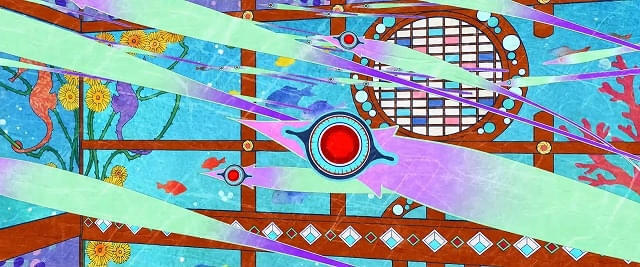
(C)Twin Engine
–Please tell us about Director Suzuki’s work from Director Nakamura’s perspective.
Nakamura: I think the biggest thing this time was not only Director Suzuki himself, but also the power of the unit that Director Suzuki leads. The person who made his directorial debut with Chapter 1 is continuing with Chapter 2, and Director Suzuki is also training the people. There are some people who wonder if it is okay to make a directorial debut with a theatrical work that requires such a heavy amount of work, but as with Director Suzuki’s debut, I personally have a stance that it is better to let them do it right away. Rather than taking a slow, roundabout approach, it is better to have them tackle something difficult right away. I was very grateful that Director Suzuki trained the people and got them to work together, and I think that was possible because Director Suzuki’s way of working has changed to a style of “fighting as a team.” In the past, I used to look at them as individuals or as a director and think, “I wonder if they are struggling a lot,” but now they are not working alone, but as a unit called “Director Suzuki and his fun friends.” So, working with Director Suzuki in Chapter 1 and Chapter 2 means working with the people in that unit. For example, when I react to a certain cut, it goes through the filter of Director Suzuki, and the work is quickly assigned to the team members, with instructions like “Do that part like this.” The flow is really beautiful, and even if I throw a messy ball, Director Suzuki, who is very familiar with my way of doing things, organizes it and the work flows smoothly like it’s going into a clean factory line. I learned a lot from watching how amazing it was, and it was interesting to see how it would be better to make things like this in the future. I’m glad I got to work with him.
— What kind of people are the team led by Director Suzuki that you’ve mentioned so far?
Suzuki: Speaking of the production system, our team is credited as the final copy of the storyboard.
— The name “Kuruseru” is credited.
Suzuki: Kuruseru is the name of the production company, and Chapter 2 is being produced by Kuruseru. A single team is made up of key animators, animation directors, directors, etc., and they are all in charge of storyboarding in separate locations. Sometimes I draw the key animation for the part I’m in charge of drawing the key animation for, so this has the advantage of allowing me to work with an extremely high level of understanding of the content of the work.
–I see. Because you’re involved in the work from the storyboarding stage, you can see the overall flow of the play very well.
Suzuki: That’s right, that’s right. Since I drew the key animation for this cut myself, I can work in a small team with a flow of drawing the key animation for the meaning of the play, and then turn it into animation, so there’s a high level of understanding of the work among the staff. I’m the one who created that flow, but paradoxically, I feel like it helped me a lot.
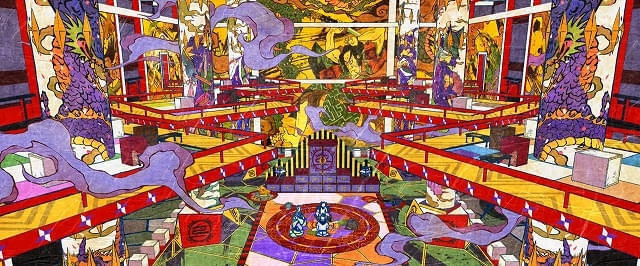
(C)Twin Engine
–There is a credit for the reel at the end, and it seems that in Chapter 2, they made a video that connected the materials in the middle of production at an early stage.
Suzuki: The reel in Chapter 1 was probably the storyboard shot for the part that our team helped with, and in Chapter 2, we mainly made the reel. The storyboard shot was made first, and then appropriate pictures were drawn and added. It would take too long to explain the production method in detail, so I will give a brief summary.
–Director Suzuki, who has also directed 3DCG works, seems to be very conscious of the process management aspect of making a plan first and working while looking at the overall picture.
Suzuki: At Kuruseru, we all aim to do the right job for the right person. I think my specialty is assigning work that suits each staff member’s situation and developing a system for that purpose, so that we can create a good work in a cycle of working and going home comfortably. Anime is a group effort, so if combining people like this will improve the work, then it’s definitely the best way to go about it, so that’s a big part of what we aim for.
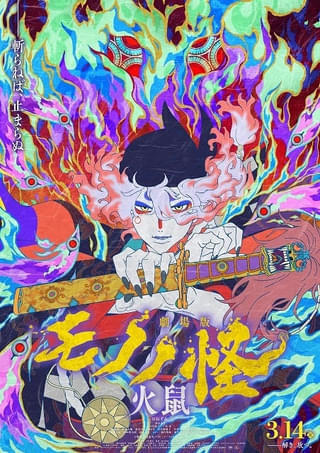



Comment